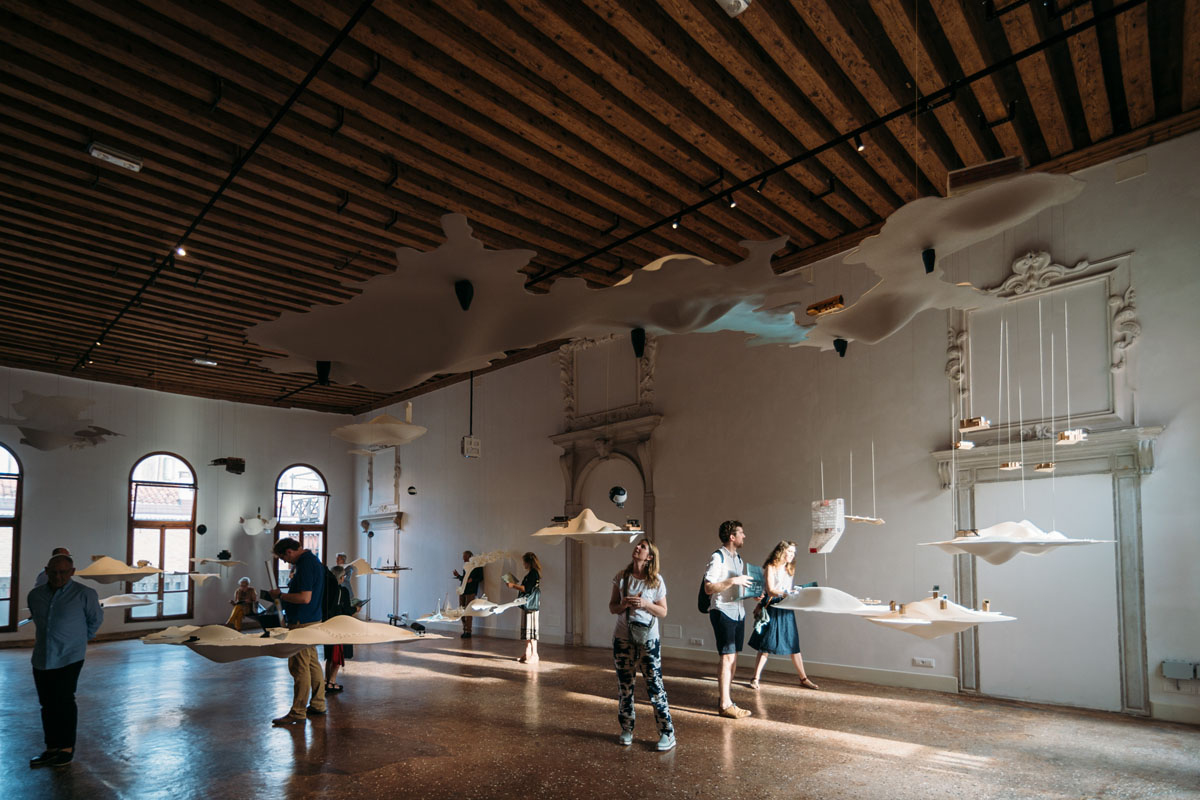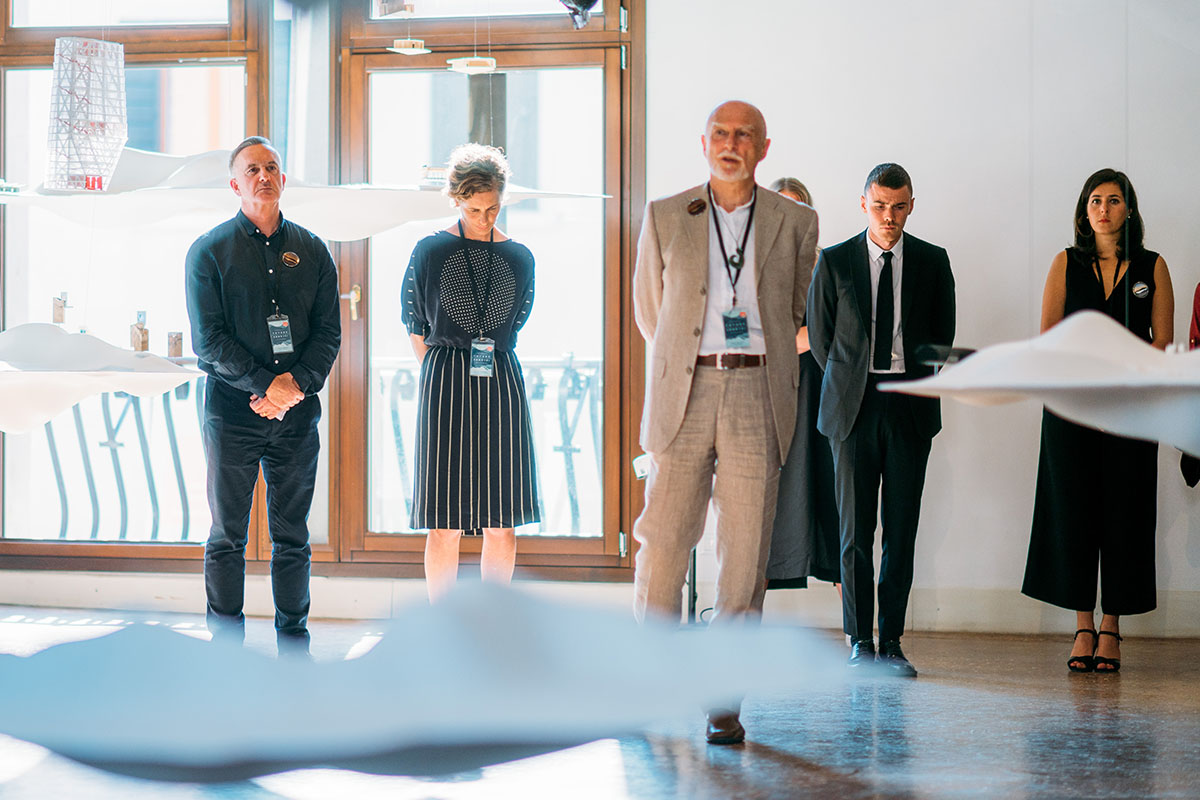The sounds of Aotearoa New Zealand rang out in a small Venetian square as the country’s exhibition for the 2016 Venice Architecture Biennale was opened this week with a series of launch events.
 Future Islands, New Zealand's exhibition at the 2016 Venice Architecture Biennale.
Future Islands, New Zealand's exhibition at the 2016 Venice Architecture Biennale.
Neighbours looked down from their windows and tourists peered from alleys as cultural groups from AUT University and Tuhoe sang waiata at the blessing ceremony on 26 May and staged a stirring rendition of the Ka Mate haka during the opening ceremony on 27 May.
New Zealand Ambassador to Italy Patrick Rata and New Zealand Consul-General in Milan Ann Clifford were among hundreds of guests in attendance as the exhibition Future Islands was officially inaugurated.
Already Future Islands is attracting positive reviews from international media such as Wallpaper magazine and from the throngs of visitors who have toured the exhibition, which is being staged in a palazzo near St Mark’s Square in the centre of Venice.
“There is a real buzz about Future Islands,” said Tony van Raat, the commissioner of the New Zealand exhibition. “The creative directors set out to create a beautiful and engaging exhibition and judging from the comments of the people who have visited Future Islands, they have succeeded brilliantly.”
“There is a freshness and lightness about Future Islands which is allowing it to stand out in a Biennale crammed with dozens of interesting exhibitions.”
New Zealand Ambassador Patrick Rata said it was good to see New Zealand participating in the Venice Architecture Biennale, and he congratulated the creative team and the New Zealand Institute of Architects on the staging of an impressive exhibition.
Visitors to the exhibition ascend a stairway in the beautifully conserved Palazzo Bollani to encounter a light-filled room occupied by an archipelago of floating “islands” which support scores of models of New Zealand architectural projects.
The exhibition includes a video projection and an audio work which plays in the stairwell approach to the exhibition. A catalogue – already highly sought after – accompany the exhibition.
Official exhibitions from 62 countries are competing for attention at the six-month Biennale, which attracts a quarter of a million visitors.
Future Islands Commissioner Tony van Raat, director of the Architecture Research Lab at AUT University, said the Biennale is a unique opportunity to profile this country’s architecture.
“If we want to test our architectural thinking, contribute to the international debate about architectural issues, and raise awareness of New Zealand’s design capabilities, the Venice Biennale is the place to do it,” van Raat said.
Future Islands has been produced by a group of architects and exhibition designers led by creative director Charles Walker, Co-Director of the Colab research unit at AUT University, Auckland, and associate creative director Kathy Waghorn, of the University of Auckland’s School of Architecture and Planning.
Walker, whose exhibition concept was selected in an open competition contested by 15 teams led by New Zealand architects based here and abroad, said representing this country at the world’s most influential architecture event is an honour and a challenge.
“This is only the second time New Zealand has had a national exhibition at the Venice Architecture Biennale,” Walker said. “Other countries have been going to the Biennale for decades, but it’s still new for us.”
“We think Future Islands does stand out in the full-on Biennale environment,” Walker said. “The exhibition expresses the diversity of contemporary New Zealand architecture, and of modern New Zealand society.”
The exhibition consists of 22 island-like forms, some of them several metres in diameter, suspended in two rooms in the Palazzo Bollani.
The ‘islands’ – shells of fibreglass, carbon fibre or infused hemp – were made by Core Builders Composites, the Warkworth-based company that builds yachts for Oracle and other America’s Cup syndicates.
Arranged on or around the islands are more than 100 models representing 50 New Zealand architectural projects. These projects are the work of a wide range of New Zealand designers – architects from large practices and small firms, graduates and students – and vary in type, scale and purpose.
 Charles Walker, Kathy Waghorn and Tony van Raat.
Charles Walker, Kathy Waghorn and Tony van Raat.
“Many of the projects have been built, some have not yet been built, and others are purely speculative,” Walker said. “The importance to architecture of speculative work is something we want our exhibition to convey.”
“The island metaphor is a means to do this,” Walker said. “Islands have always been seen as sites of possibility. They hold the promise of alternative ways of living, and that prospect is now more attractive than ever.”
Walker said Future Islands’ multiple tellings of New Zealand’s architectural story was also influenced by a book he has long admired, Italo Calvino’s Invisible Cities, a 1970s novel in which 55 imagined cities are revealed to be versions of one city – Venice.
“We liked the idea of using Calvino’s novel to hint at a connection between two island places, Venice and New Zealand, and we were inspired by the levity of Calvino’s writing,” Walker said.
Exhibition associate creative director Kathy Waghorn said that while Future Islands is about architecture’s possibilities, it’s also about architects’ responsibilities.
“Architects should be optimistic that they can make a difference. They are well equipped to offer alternative solutions to contemporary economic and environmental challenges.”
Waghorn said this concern is compatible with the theme of the 2016 Venice Architecture Biennale. That call to arms theme, chosen by the Biennale’s overall director, Chilean architect Alejandro Aravena, is Reporting from the Front.
“Like Aravena, we believe architects, wherever they are practising, have to put themselves forward, if the world is to have a sustainable and equitable future,” Waghorn said.
New Zealand’s participation in the 2016 Venice Architecture Biennale was instigated and organised by the New Zealand Institute of Architects.
The Future Islands creative team also includes architects Jessica Barter and Maggie Carroll (Bureaux), Jon Rennie (Athfield Architects) and Rewi Thompson; craftsman builder Stephen Brookbanks; architectural model maker Minka Ip; and video projectionist Bruce Ferguson.
Future Islands is being staged at Palazzo Bollani, Castello, Venice. It is open to the public until 27 November, 2016, Tuesday to Sunday, 10am to 6pm.
The exhibition can be followed, and a media kit, including images of the exhibition, is available here.



